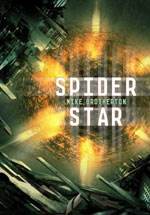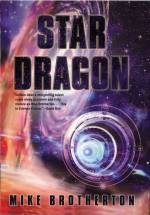Search
Who Determines Where the Hubble Space Telescope Points?
October 24th, 2007
So I got another one of those emails today asking me to do some community service. Astronomical community service. It happens all the time and every professional astronomer is expected to contribute semi-regularly. Often the contribution is relatively minor, like reviewing a paper for one of the journals like Monthly Notices of the Royal Astronomical Society. A little less often it’s something more onerous, and more rewarding, like serving on a telescope allocation committee (AKA “TAC”).
So today, it was a request to review proposals for the Hubble Space Telesope (AKA “HST” — this is NASA associated, so expect more three letter acronyms, AKA “TLA”s).
I’m busy now, and will be busy in May when they hold the review, but I’m likely to say “yes.” I said “no” last year, and I’ve said “yes” to HST once or twice over the years. I’ve reviewed for the National Science Foundation (NSF), for the Spitzer Space Telescope, for NASA’s Infrared Telescope Facility, for the Chandra X-ray Observatory, and been asked to be on review panels for several other telescopes/programs.
When you first start getting these requests, it’s flattering. You’re a recognized expert in your field and your help is wanted at the national level. And the stakes are high, with the telescope time and analysis funds being awarded worth millions of dollars and sometimes even careers. The process is amazingly educational and worth doing for that reason alone. But boy, is it a lot of work!
A few weeks before a two-day face-to-face meeting (in Baltimore for HST), you get sent about 60 proposals. Each is about eight pages long, with most of those pages dedicated to the scientific justification. You have to read them carefully and critically to discuss with other world experts, and no one wants to look like an idiot. Furthermore, some astronomer, or group of astronomers more likely, has put their blood, sweat, and tears in each proposal, requesting some small portion of HST’s time over the next year (AKA “cycle” since it usually doesn’t match a calendar year). Out of those 60 proposals, about a dozen on average will make it through and be done by HST.
At the two-day meeting, about a dozen panels of about eight astronomers each discuss the strengths and weaknesses of their group of 60 proposals. Well, almost. There are preliminary grades submitted, and usually the bottom quarter is triaged and not even discussed. Experiments over the years have shown that essentially never does a proposal in the bottom of the preliminary rankings get time even after a more thorough discussion. It might seem unfair, but it’s efficient and people are volunteering their time. The proposers do get informed about their low ranking and get comments from primary and secondary reviewers about the pros and cons of their proposal to help them revise it for resubmission later.
Each panel is specialized into a subfield of astronomy, like stars, galaxies, cosmology, etc., and the relative amount of time awarded to each subfield to distribute is goverened by the proposal pressure — how many proposals there are in each subfield. Oh, and there are proposals to use archival data or conduct theoretical research in support of HST science, but these only ask for money, not telescope time. The proposals for telescope time also get money, analysis funds from NASA, to help ensure quality, timely analysis of data obtained.
The discussions sometimes become heated, and sometimes hinge on individual egos or individual biases (which is why there’s a group making the decision). They tend to be fair, but sometimes a little arbitrary; a lot of high-quality projects don’t get done. But essentially every approved program is very worthwhile, and the slate usually includes a range of big, solid projects to small, speculative projects that might have a big payoffs.
There are more details, and it’s more complicated than this, but that’s the gist of it. This year is especially crucial, assuming that Hubble is serviced by the Space Shuttle and its suite of crippled instruments replaced by new ones. The community has been waiting for years for this, and there’s a lot of pent-up ideas about what to do waiting to turned into proposals. I have a few of my own (I’ve had several projects get through the process myself).
So who decideds where HST points?
The answer this year is me, along with another hundred astronomers or so, sifting through about a thousand proposals from around the world.
You can follow any responses to this entry through the RSS 2.0 feed. You can skip to the end and leave a response. Pinging is currently not allowed.

